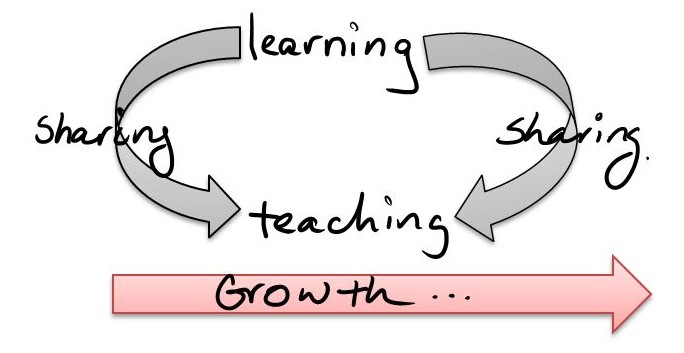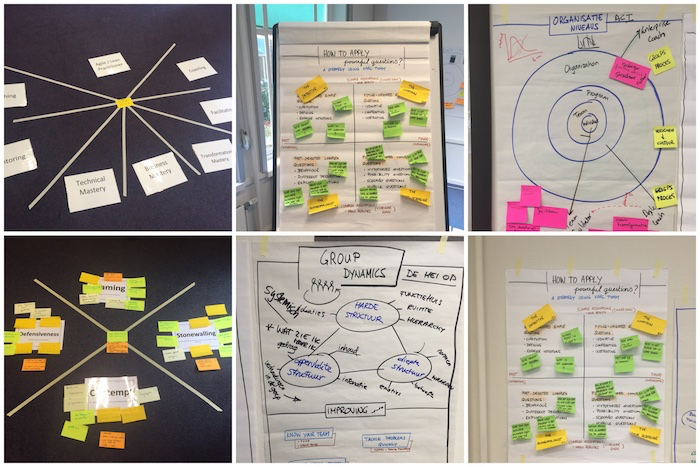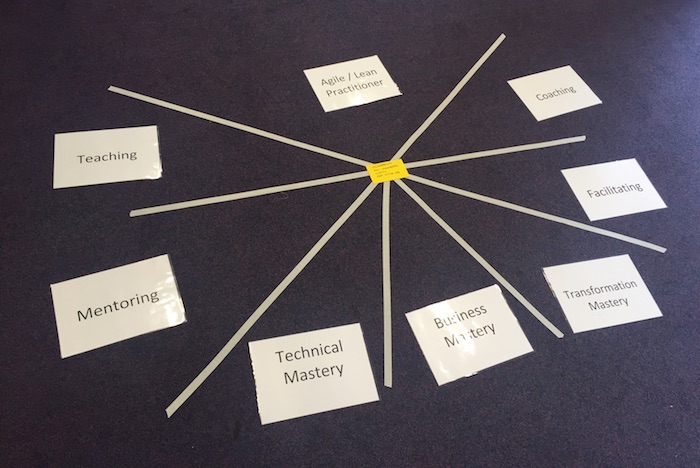No, I’m not referring to your metal toolbox with wrenches, allen keys, or hammers. I’m referring to the toolbox that you as a scrum master, or even agile coach have in order to improve teams. With this article I’d like to share my experience and things that I learned during a Prowareness “scrum master advanced” course. I would absolutely recommend to participate in such as course, as you’ll learn a lot from the course itself through shared experiences with the other participants.
I’m sharing part of the information that I received during the training, also just in order to get my thoughts again straight. This information can’t replace the value delivered in the actual training.

Why I wanted to participate?
My personal reason to participate was that I like to continuously improve my skills as a scrum master, and that requires at times some training. A lot of knowledge within scrum and agile can found when working with it, reading a book or article. Yet the hands-on experience you get from an experienced agile coach and of other scrum masters during a training are very valuable.
What did I learn?

During the two-day training we received and spoke about a lot of tools and experiences we had with scrum. During a ‘coaching dojo’ I was also confronted with my own behaviour, but I’ll get to that later.
Liberating structures
The training started with “impromptu networking”, one of the thirty-three liberating structures that can help you improve engagement in meetings and presentations. During the two days we also practiced a few other structures as well. I was aware of these structures before, yet had a mixed success in applying them within the team I’m working with. Actually practicing these structures has boosted my confidence in trying them a few times more.
Stances of a scrum master

The Agile Coaching Institute defined an agile coach competency framework a number of years ago, that can serve you as scrum master or agile coach with some insight into your preferred stance. Using this framework, which is explained in more detail here, you can move between being a coach/facilitator to teaching. If you are aware of these areas, together with the bagage you have as an agile practicioner, you can take the right stances a team needs.
Another professional scrum coach, Barry Overeem, has created a whitepaper and really good talk Youtube on the “8 stances of a scrum master”. Which shows similarities with the ACI framework.
Coaching skills
This was one of the topics that I was particularly interested in, and it made me realize that there is a lot that I can improve on. We first spoke about various models and aspects that come across in coaching a team, or a person; such as levels of listening, asking powerful questions, and the coaching arc.
Powerful questions catalyze insights, achieve innovation and action
We practiced these aspects during a coaching dojo, where one member of our team became the person to be coached and another the coach. The rest of our group would then be observers during the coaching session. In the session where I was the coach, I found myself looking for the right questions instead of truly listening to the story the coachee, and I even found that I tried to provide a solution without knowing anything about the problem. So yes, these are some aspects of coaching that I can work on. During another coaching session in the dojo I noticed that through only asking questions you can let the coachee provide the solution to a problem themselves.
Wrapping up
In the two days of the course I learned a lot more, though I don’t want to give everything away of the course itself. Each course is different from the previous, as explained by our trainer, as each group has different needs or wants to address different aspects of the scrum master role. If you’re a scrum master with some experience and would like to add tools to your agile toolbox, I can really recommend the Prowareness course (although it is in Dutch).
P.S. If you’ve enjoyed this article or found it helpful, please share it, or check out my other articles. I’m on Instagram and Twitter too if you’d like to follow along on my adventures and other writings, or comment on the article.
 Buffer
Buffer Tweet
Tweet Share
Share